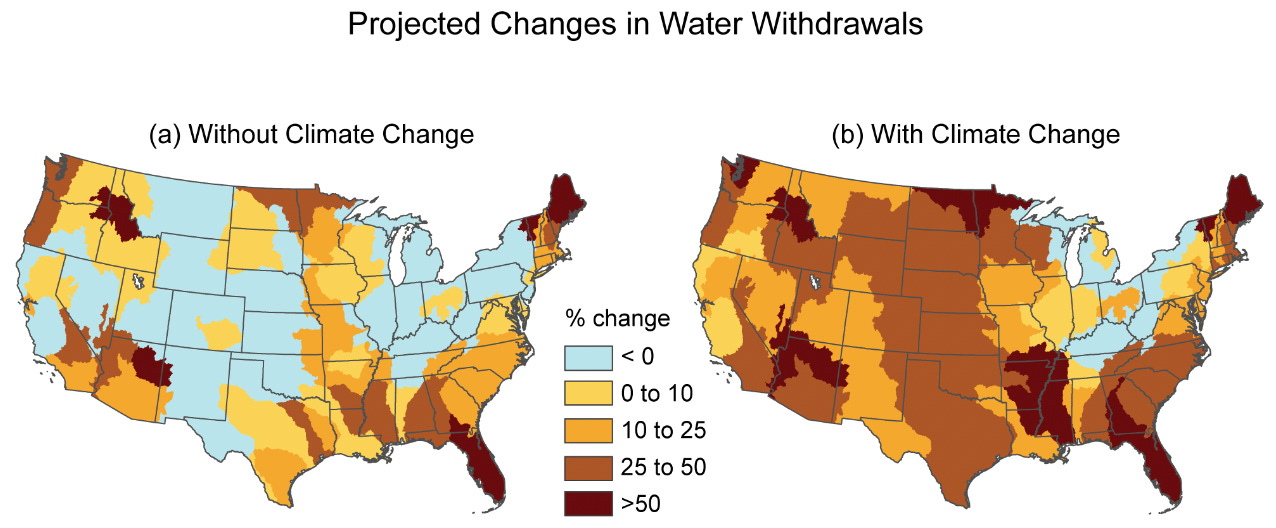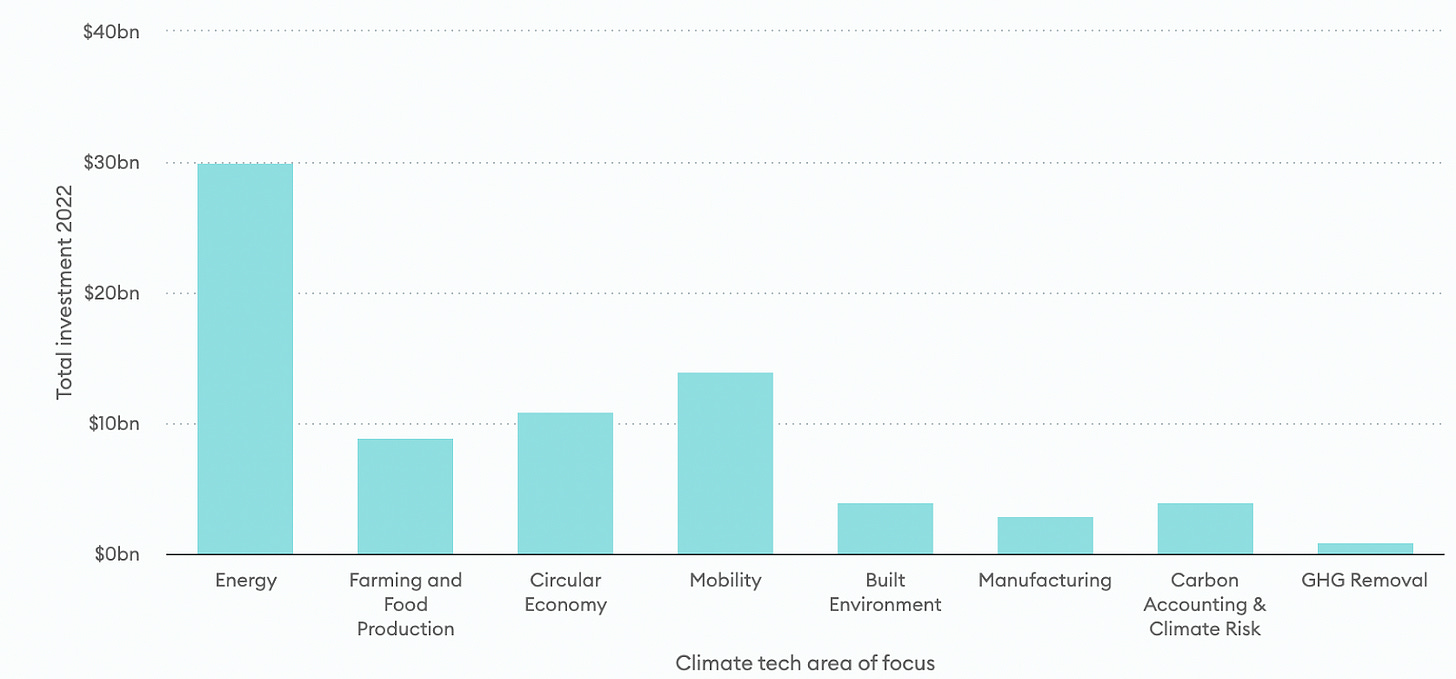The History of Climate Tech as a Tool to Fight Climate Change
Climate tech's role in reversing climate change has taken a huge step up.
Look at the evolution of technology in the last century and you’ll agree we’ve come a long way. But the same technology has been polluting the environment, damaging our planet, and raising our planet’s temperature.
The question that arises here is - if technology evolution has been the cause of climate change, can climate technology be the solution?
This article explores the problems our planet faces due to climate change, the state of climate tech investment to date, and what the future holds for climate technology.
What Research Reports Have to Say About Climate Tech
Earth's temperature has risen by 0.08°C every decade since 1880, but yearly, the rate of warming has more than doubled at 0.18°C.
Due to lower carbon dioxide emissions in the past, the temperature rise wasn't an issue, but since 1980, the Earth's temperature has been rising severely. If left unchecked, it will lead to extreme living conditions. The increase in temperature not only affects humans but also has a significant impact on most animals, freshwater, and many more resources.
Below are just a few primary examples of how climate change is affecting the resources of the Earth.
Temperature Rise Due to Climate Change
Due to the rise in greenhouse gas emissions, the global surface temperature is on the rise. Nearly the entire planet is seeing more and more hot weather, making it difficult for people to work outside. Apart from this, due to the heat, wildfires start more quickly and spread across vast areas burning topsoil and making the land non-fertile.
Rising Temperatures Cause Extreme Rain and Snow, Water Scarcity
As the world becomes warmer year by year, water evaporation will keep increasing, and the dryer conditions due to evaporation will lead to scarcity of freshwater.
Warmer air holds more moisture than cool air. As a result, the clouds will be able to hold more water, resulting in heavier rains and snowfalls, paving the way for natural calamities like floods, droughts, and extreme weather. This water change has already begun in the US, as clusters of thunderstorms have become more frequent.
With the Earth becoming warmer due to climate change, water evaporation will keep rising. The supply of freshwater will continue to decrease alongside an increase in demand.
Here’s how climate change can affect US water withdrawals if the temperature keeps increasing.
Loss of Animal Species
As the temperature of the Earth rises, it's becoming more challenging for fish to survive in the water and for animals to live on land. The planet is losing animal species 1,000 times faster than at any other time in recorded history. A million species are at risk of extinction in the next decade if the temperature keeps rising the way it is.
Food Scarcity
Temperature changes affect fish, livestock, and plants the most and reduce their nutrition levels. With climate change, the acidic level in water bodies keeps rising, which endangers billions of marine life. Heat stress also diminishes water and grasslands for grazing, leading to declining crop yields.
Increasing Health Risks
Change in climate is already impacting human health due to an increase in air pollution, disease, extreme weather conditions, and food scarcity. Such environmental factors take the lives of about 13 million people every year.
The list of climate change impacts is endless, but people have been trying to reverse climate change for decades, and billions of dollars have been invested in climate tech startups just in the past year.
The Story of Climate Tech From 2015 to 2021
2015-16: Rising Concern of Climate Change Amongst Governments
In 2015, heatwaves, forest fires, storms, and droughts were already hurting the environment, resulting in loss of life, reduced quality of life, and noticeable temperature rise.
Since then, the frequency of natural calamities and climate-related hazards has increased everywhere. Every region worldwide has been investing a significant amount of money to fight climate change.
In 2015-16, the major source of climate tech investment was market-rate loans provided by multilateral and national DFIs in sectors like water and waste-water management, agriculture, forestry, land-use, and natural resources management.
2016-18: Climate Tech Investment Crossed Half Trillion Mark
The three years from 2016-2018 saw a substantial increase in climate tech investment from the North American and East Asia regions. A quarter of this investment was made because of the rise of EVs and to build sustainable infrastructure.
In 2017, climate financing reached a record high of $612 billion, driven particularly by renewable energy capacity additions in China, the U.S., and India, as well as increased public commitments to land use and energy efficiency.
This funding was a drop in the bucket compared to the estimate of investment needed to decrease world temperatures by 1.5°C. It's estimated that to decrease the temperature by 1.5°C by 2050, the world needs a yearly investment ranging from $1.6 - $3.8 trillion.
Even though the overall climate tech investment dropped in 2018, it was a crucial moment for climate tech startups because venture capitalists started showing interest and investing heavily in the field.
2019: A Drop In Climate Tech Investment from VCs
Although VC investments in climate tech have grown at almost five times the rate of the overall global venture capital market, 2019 saw a small drop.
In 2019, the funding from VC was comparatively less, but it was primarily focused on seed and series A stage startups, implying a healthy pipeline of younger firms continuing to enter the market, lining up to approach more mature funding milestones in the coming years.
Most of these startups focused on reducing carbon emissions by using renewable energy sources (mainly solar).
2020-2021: VC Investment Keeps Rising, But Is It Enough?
2020 was the year when VC investments in climate technology hit an all-time high of $16.4 billion worldwide. Most of the money invested was in startups in their later stages.
With COVID-19 impacting the world, the overall climate tech investment was slow in the latter half of 2020. But, the investment skyrocketed in 2021 and hasn't slowed since then.
2021-2022: The Boom In Climate Tech Investment
2021 was a record-breaking year for VC climate tech investment, with $32 billion raised by startups (through September 2021).
Around $18 billion of the total investment comes from the USA and Canada, followed by $9 billion from Europe.
Where We Are Currently with Climate Tech
With the Q4 data of 2022 still to come, the VC climate tech investment so far has been around $79 billion.
Comparing just Q1-Q3 in 2021 and 2022, we’re seeing a greater than 4x increase in VC investment into climate tech startups YoY. This is a huge increase, especially considering the global drop in VC investments across all industries.
Currently, about 44,000 startups are trying to fight climate change and create new revolutionary technologies; this number is estimated to reach 66.5K by 2030.
Here are the eight climate tech areas of focus to which these startups belong:
The above graph depicts that people are inclined to leverage renewable energy sources to generate electricity and clean fuel. As a result, investors are also inclined to invest in energy-related projects the most, followed by Mobility.
2024 & Beyond: The Future of Climate Tech
According to several climate tech reports, VCs and other investors are focused on two sectors that might make the biggest climate impact in the next decade - Increasing the use of renewable energy and electric vehicle production.
Governments and VCs worldwide are trying to fund and support startups that are coming up with alternative methods to produce electricity that don't involve fossil fuels.
Although the growth of EVs has been slow in the last decade, people can now see the importance of switching away from their gas vehicles, and there are numerous brands like Rivian, NIO, and Li Auto trying to manufacture and bring new EVs onto the market.
VCs have also started investing in sectors like food technology, carbon accounting, sustainable fashion, and many more sectors that are considered to be a part of climate tech.
Being a startup, climate tech companies face challenges similar to those faced by larger corporations, but on a smaller scale. The top 3 challenges that climate tech startups face are:
Growth initiatives - Building partnerships
Expanding overseas
Scaling operations - Engineering and Tech
Considering the challenges climate tech startups face and the massive potential for profit and climate impact that they have, it’s no surprise that VCs will play a crucial role as investors in climate tech in the coming years.
The most substantial investment commitment into climate tech this year has, of course, been from the Inflation Reduction Act, which announced funding of $369 billion in the climate and energy sectors. We’ll be digging into this massive investment in its own article in Warming Up to Climate Tech next month.
Philanthropists have also been donating funds to climate tech clubs and several environmental organizations worldwide; here are a few examples:
Michael Bloomberg - $500 million
Stewart and Lynda Resnick - $750 million
Hansjörg Wyss - $1 billion
Laurene Powell Jobs - $3.5 billion
Jeff Bezos - $10 billion
Climate tech investment is picking up fast, and we can get to a trillion in annual investment within the next decade with 50K+ startups in the climate tech sector, new climate-focused VC funds being announced every week, and many large corporations focusing on climate tech initiatives as well.
Turning fear into action
Climate change is one of the most dangerous threats to our planet and society. Fortunately, there has been a huge increase in support for reversing climate change from governments, companies, investors, and the general public.
There are thousands of startups coming up with innovative and exciting ideas to reverse climate change. These startups are being funded by both VCs and public money, but it’s of immense importance that the amount of money coming from VCs in climate tech increases substantially each year.
Some startups like Revive & restore, Space Forge and Living Carbon have been successful in raising a few VC rounds of investment and are trying to create revolutionary technology in the coming years.
I’m here for many more of those ideas coming to life to save the planet.
If you enjoyed this article, feel free to share it and subscribe to Warming Up to Climate Tech. This publication is brought to you by Inbound Growth Co - content for climate-focused brands.



















